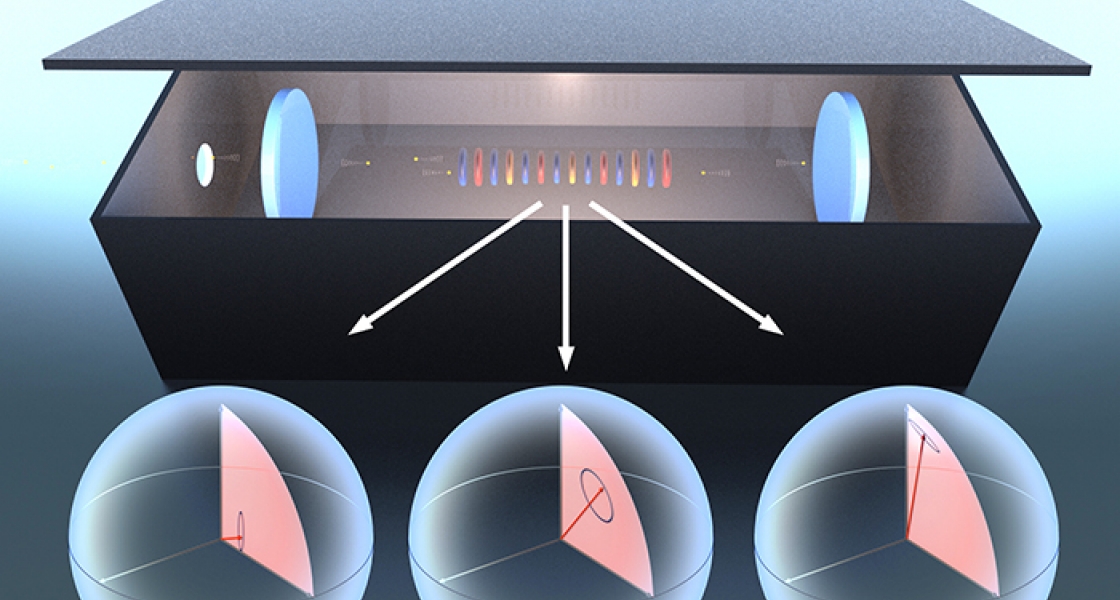When the Thompson group first demonstrated its innovative “superradiant” laser the team noticed that sometimes the amount of light emitted by the laser would fluctuate up and down. The researchers wondered what was causing these fluctuations. They were especially concerned that whatever it was could also be a problem in future lasers based on the same principles.
In the group’s superradiant laser, a million laser-cooled rubidium atoms at the heart of the laser act as the primary repository of information. In contrast, the light field inside the laser is relatively empty, or dark. The light field can be so dark that it contains, on average, one or fewer photons (quantum light particles).
Since the light field is so empty, the researchers deduced that if the amount of light leaving the laser was fluctuating, it must mean that there is some kind of oscillation occurring in the atoms that store the information causing the fluctuation. So, they decided to peer inside the laser and see for themselves what was going on. In particular, the group wanted to discover how the process of superradiant lasing was affected by what was happening to the atoms in the heart of the laser.
Graduate students Justin Bohnet, Zilong Chen, Josh Weiner, and Kevin Cox worked with Fellow James K. Thompson to investigate the superradiant laser’s stability in response to specific changes in its surroundings. This experiment was somewhat like investigating the stability of a bell by hitting it with a hammer and listening to it ring. But instead of hammering the superradiant laser, the researchers tickled it and used an innovative quantum-measurement technique they had previously developed to precisely determine how the atoms were responding.
To tickle their superradiant laser, the researchers decided to use the ordinary everyday laser that routinely makes the rubidium atoms run around between quantum states. They simply made the power fluctuate in this tickling laser. The researchers found that under certain conditions their laser was not very ticklish. But, in other situations, the atoms wobbled like crazy — if the tickling was done at just the right speed (frequency).
The researchers also discovered that the superradiant laser exhibited a kind of self-awareness in which it measured the atomic wobblings and then adjusted itself to reduce the amount of wobble. The researchers even figured out how to get the superradiant laser to increase the wobbling of its atoms.
“What the atoms are doing is really important for understanding this kind of laser,” Thompson said, “We had to open the black box (laser) and look inside to get a complete picture of what was happening.”
The results of this experiment are expected to guide the future development of superradiant lasers made with strontium and ytterbium atoms. Such lasers will likely improve the precision measurement of time, gravity, and fundamental constants. — James Thompson and Julie Phillips




